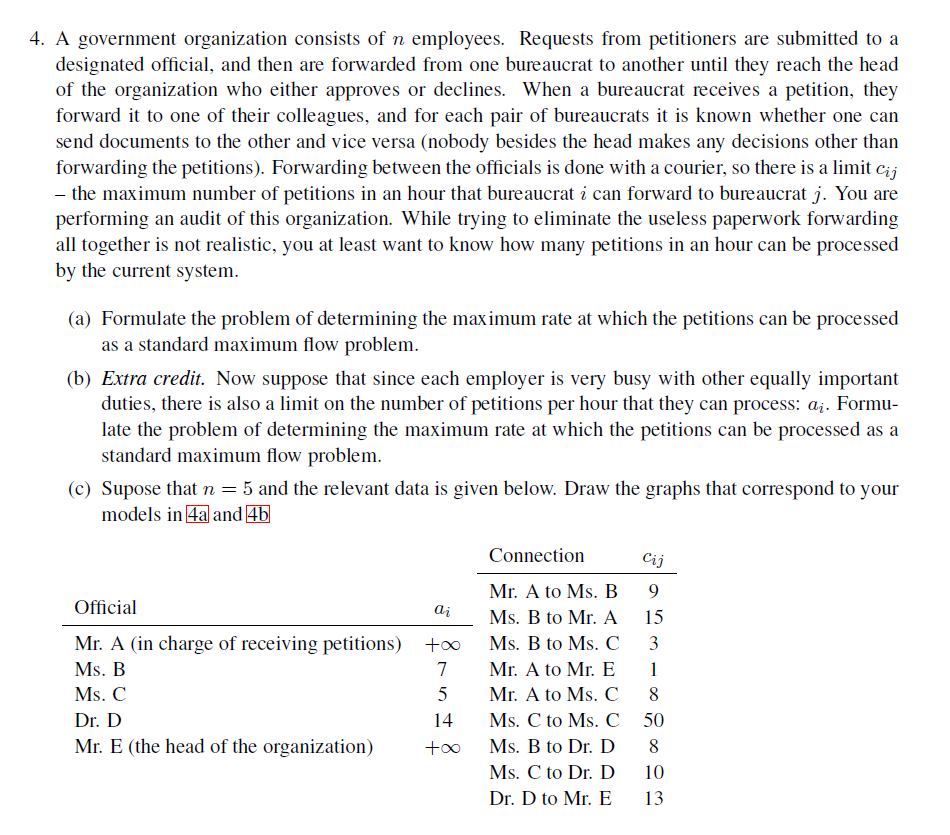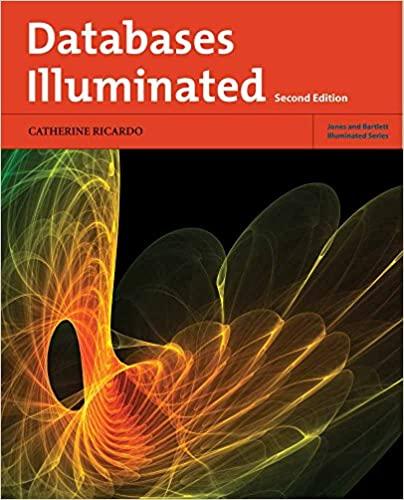
A government organization consists of n employees. Requests from petitioners are submitted to a designated official, and then are forwarded from one bureaucrat to another until they reach the head of the organization who either approves or declines. When a bureaucrat receives a petition, they forward it to one of their colleagues, and for each pair of bureaucrats it is known whether one can send documents to the other and vice versa (nobody besides the head makes any decisions other than forwarding the petitions). Forwarding between the officials is done with a courier, so there is a limit c_ij - the maximum number of petitions in an hour that bureaucrat i can forward to bureaucrat j. You are performing an audit of this organization. While trying to eliminate the useless paperwork forwarding all together is not realistic, you at least want to know how many petitions in an hour can be processed by the current system. Formulate the problem of determining the maximum rate at which the petitions can be processed as a standard maximum flow problem. Extra credit. Now suppose that since each employer is very busy with other equally important duties, there is also a limit on the number of petitions per hour that they can process: a_i. Formulate the problem of determining the maximum rate at which the petitions can be processed as a standard maximum flow problem. Suppose that n = 5 and the relevant data is given below. Draw the graphs that correspond to your models in 4a and 4b A government organization consists of n employees. Requests from petitioners are submitted to a designated official, and then are forwarded from one bureaucrat to another until they reach the head of the organization who either approves or declines. When a bureaucrat receives a petition, they forward it to one of their colleagues, and for each pair of bureaucrats it is known whether one can send documents to the other and vice versa (nobody besides the head makes any decisions other than forwarding the petitions). Forwarding between the officials is done with a courier, so there is a limit c_ij - the maximum number of petitions in an hour that bureaucrat i can forward to bureaucrat j. You are performing an audit of this organization. While trying to eliminate the useless paperwork forwarding all together is not realistic, you at least want to know how many petitions in an hour can be processed by the current system. Formulate the problem of determining the maximum rate at which the petitions can be processed as a standard maximum flow problem. Extra credit. Now suppose that since each employer is very busy with other equally important duties, there is also a limit on the number of petitions per hour that they can process: a_i. Formulate the problem of determining the maximum rate at which the petitions can be processed as a standard maximum flow problem. Suppose that n = 5 and the relevant data is given below. Draw the graphs that correspond to your models in 4a and 4b







